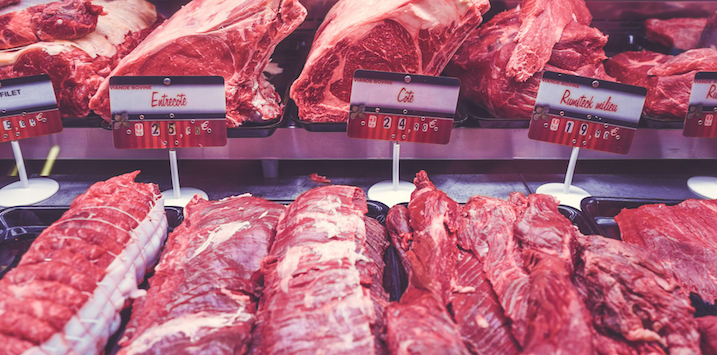
Meat producers are headed for beefier profits
A combination of booming protein consumption in China, drought in Australia and African swine fever is sending meat prices sky high. That’s great news if you’re a producer. But not so good if you’re a meat eater. To paraphrase former PM, Malcolm Turnbull, there’s never been a better time to be a vegetarian.
Thanks to the drought in Australia and African swine fever in China, beef prices are surging globally to such as extent that some of the market participants we know are describing conditions as unlike anything they’ve seen before.
In the US, the imported beef indicator price (90CL Chemical Lean – a benchmark price for frozen manufacturing beef into the US) is near a four year high.
Thanks to the drought, farmers are being forced to send their herds, including breeding cows, to slaughter. Usually, when the proportion of cows slaughtered rises (currently it’s up 17 per cent year-on-year and 20 per cent higher than the five-year average), manufacturing of alternative supplies such as leg cuts to the US would keep a lid on prices. Today, however, a weak Australian dollar and huge demand from China for all cuts of beef (Hindquarter cuts to China are up 81 per cent) is supporting a global boom in prices.
The US is still our largest market, accounting for nearly 40 per cent of shipments calendar year to date. But two years ago, China represented just 3 per cent of Australian exports. In 2019, Chinese demand has grown fourfold to 12 per cent.
New Zealand is experiencing similar dynamics with exports to China rising 155 per cent in the last year to almost 55 per cent.
Our channel checks suggest the boom in Australian beef prices can be directly attributable to African Swine Fever – a virus that kills most pigs that contract the condition within two weeks – which has halved China’s swine herd by half since August 2018 and caused a pork production shortfall of 15-20 million tonnes.
In September, China’s pork imports jumped more than 70 per cent year-on-year and domestic prices more than doubled. Many believe the Chinese pork shortfall will continue for the next 3-5 years and consequently, Australian beef prices at the supermarket, and the prices consumers pay for burgers at all the major chains will rise dramatically.
Investors who want to investigate this theme might like to consider whether a Chinese protein shortage caused by Swine Fever could lead to substitution for beef, chicken and lamb, and maybe even salmon. In preparation for the northern hemisphere summer (keep in mind the US cow cull is up significantly) the US will have to compete with China to obtain its desired quantities. Prices could be headed much higher and, if correct, analysts may have underestimated the impact on the revenue side for producers, and on the cost side for customers.